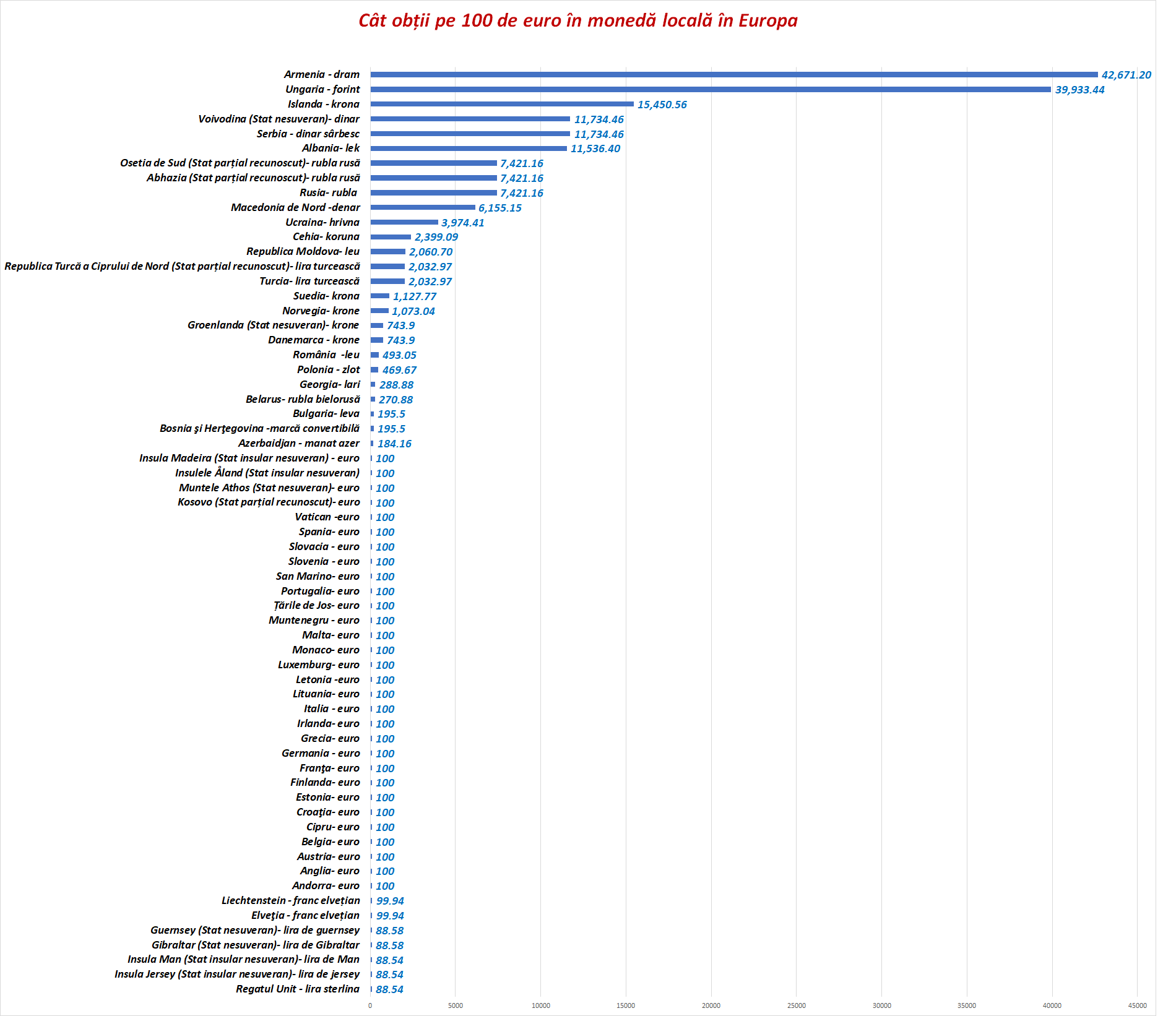
I don’t know what it’s like to be a millionaire, but if I wanted to find out, I know exactly which European country I would go to. I would be there in less than two hours.
There are two European countries where you can consider yourself a millionaire with 2,500 euros. One is Armenia, the other is Hungary. In Armenia, from around €2,300 you have a million drams, and from €2,505 you have your first million HUF. In Armenia and Hungary we find the weakest currencies in Europe against the single currency. The next countries with weak currencies are Iceland, Vojvodina (a non-sovereign state) and Serbia, where it takes around 8,500 euros to dispose of a million in local money

Montenegro and Kosovo use the euro, but have not entered into a formal agreement with the eurozone
Euro banknotes and coins are currently the official currency in 20 of the 27 member states of the European Union, including overseas islands, departments and territories that are part of or associated with certain euro area countries. Together, these countries form the euro zone. The micro-states of Andorra, the Principality of Monaco, San Marino and the Vatican also use the euro under a formal agreement with the European Union.
Montenegro and Kosovo also use the euro, but without a formal agreement with the eurozone. According to the European Central Bank, almost 350 million people currently make cash payments in one currency.
All EU countries, with the exception of Denmark, which has an opt-out clause, are expected to join the currency union and adopt the euro once they meet the convergence criteria.
Hungarian forint subject to various pressures
As for the Hungarian forint, high inflation (24.5% in December) and a deepening current account deficit (published two days ago) are putting pressure on the forint.
The price hike started a year ago and had several causes, both the late reaction of the National Bank and aspects that the government ignored or mishandled. by analysis It would be
Parliamentary elections were held in April, and in the run-up to them, Orbán’s government handed out huge sums of money to voters, boosting consumption and thus prices. At the same time, neither the government nor the National Bank took measures to counteract the devaluation of the national currency, which led to a constant increase in the price of imported products, consumer goods, raw materials and energy. In the fall, when prices were out of control, the government, in addition to fuel prices, capped the prices of some staple foods. Traders compensated for this by increasing the price of other goods.
European currencies are stronger than the euro
In short: Pound Sterling, Swiss Franc, Jersey Pound, Manx Pound, Guernsey Pound and Gibraltar Pound.
Gibraltar pound it has been the currency of Gibraltar since 1898. Previously, the Spanish peseta was used, which was in effect until the start of the Spanish Civil War (1936-1939). That’s right, they also accept British pounds (with a 1:1 parity to the Gibraltar pound)
Isle of Man pound also set at 1:1 parity with the pound sterling, as the Isle of Man is in a currency union with the United Kingdom.
Pound sterling coins and notes are valid in the Isle of Man, but the Isle of Man pound is not valid in the UK. The first coins in the Isle of Man were issued in 1668 by John Murry (a merchant of Douglas).
(The article was written based on the idea of Atlantic)
Source: Hot News
Ashley Bailey is a talented author and journalist known for her writing on trending topics. Currently working at 247 news reel, she brings readers fresh perspectives on current issues. With her well-researched and thought-provoking articles, she captures the zeitgeist and stays ahead of the latest trends. Ashley’s writing is a must-read for anyone interested in staying up-to-date with the latest developments.